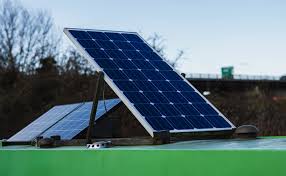Solar energy is a great way to power your home or business because it’s renewable, meaning there is no limit to how much power you can generate from the sun. Additionally, solar panels require very little maintenance and have no moving parts, making them a reliable energy source.
The essential part of any solar energy system is the panels themselves. Solar panel panels turn sunlight into electric power that can be utilized to provide power to your home or business. In addition to the panels, you’ll also need some main components that work together to form electricity. Here we will discuss solar power system components and their working.
Solar Cells
The solar cells are the primary building components of solar panels. They are typically made of silicon, although other materials can be used. The solar panel consists of several solar cells. Each solar cell consists of a positive layer and a negative layer. When light hits the solar cells, it generates an electric field that runs across the cell’s layers. This electric field pulls electrons free from the positive layer and pushes them into the negative layer. This creates an electric current, and the solar cell converts the sunlight into electrical energy. This energy can then be used to power devices or stored in batteries for later use.
Solar Glass
Solar glass is a type of glass that has been specifically designed to be used in solar panels. It comprises two layers of glass, with a thin layer of photovoltaic cells in between. When sunlight shines on the solar glass, it is absorbed by the photovoltaic cells and converted into electrical energy. This energy is then used to power the solar panel. You can then use the power from the solar panels through Texas energy plans to significantly lower your electricity bills.
EVA
One of the essential components of a solar panel is the ethylene-vinyl acetate sheet. This sheet helps to convert sunlight into electrical energy. The ethylene-vinyl acetate sheet is made up of two layers of plastic. The top layer is made of ethylene, and the bottom layer is made of vinyl acetate. When sunlight shines on the panel, the ethylene gas is activated and begins to release electrons. These electrons flow through the vinyl acetate layer and into an electrical circuit. This process converts the sunlight into electrical energy.
Back Sheet
The back sheet in a solar panel is a critical component. It is the layer of material that sits between the solar cells and the panel’s frame. The back sheet is made of thin, flexible plastic, and its main job is to protect the solar cells from the elements. It also helps to keep the panel light and easy to transport. This thin film of polyester or Tedlar serves several purposes:
- Protect the solar cells from the elements, including wind, rain, and snow.
- To protect the wiring and electrical components of the solar panel.
- To reflect sunlight onto the solar cells to increase energy production.
- To dissipate heat away from the solar cells.
Aluminum Frame
The aluminum frame in solar panels is a critical part that helps the panel work more efficiently. The frame helps hold the solar cells in place and provides a secure mounting surface.
It also serves as a conduit for the wiring that comes into and out of the panel. Additionally, the aluminum frame helps dissipate heat, essential for keeping the solar cells cool and working correctly. The frame is also responsible for transferring the load of the solar panel to the mounting system. When setting the solar frame, make sure to choose the best china valve manufacturer.
Junction Box
A junction box is an enclosure on the back of a solar panel that houses the electrical wiring and PV (photovoltaic) cells. The PV cells convert sunlight into electricity, which is routed through the wiring to the junction box, and then to the inverter. The inverter converts the direct current (DC) generated by the PV cells into alternating current (AC), which most household appliances run on. The junction box also protects your system from shorts and overloads.
Interconnector
The Interconnector is a device that helps efficiently transfer electricity from a solar panel to a battery or an inverter. It helps flow electricity from a single source to multiple destinations. Inverters are used to change direct current (DC) into alternating current (AC), which is the type of electricity used in homes and businesses.
Silicon Glue

Handyman is putting a silicon glue from tube on a wooden baseboard before attaching it to the wall
Silicon Glue is a substance used to combine solar cells to create a solar panel. It is a clear, viscous substance that quickly dries and hardens. The silicon glue is applied to the back of the solar cells, and the cells are then joined together. The silicon glue forms a waterproof seal between the cells, preventing water and dirt from entering the panel and damaging the cells. Also, look for the best molecular sieve manufacturer.
Bottomline
This article outlined the various elements of solar panel systems. It covered the solar cells, glass, etc., and explained how they work together to create a solar panel system. If you consider installing a solar panel system, this article will give you a good understanding of the different components involved.
